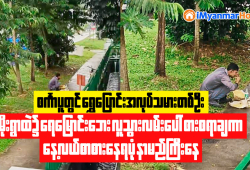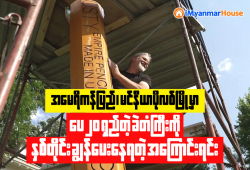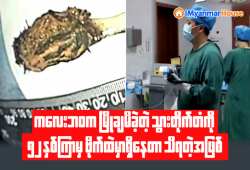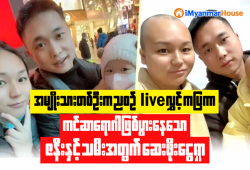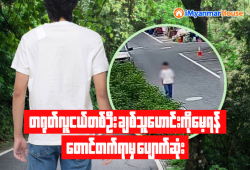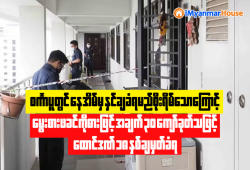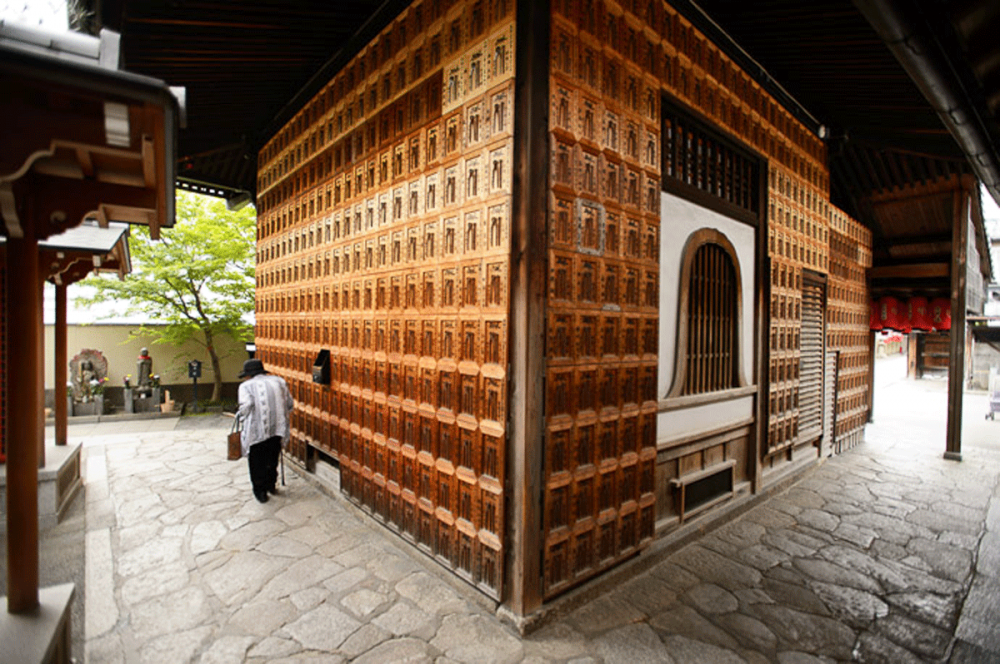
Foreign Property News | Posted by Shwe Zin Win
Without question, the most unique and solemn temple I've ever come across in Japan is the small but emotionally-packed Kuginuki Jizo Temple here in Kyoto.
今まで出会ったお寺の中で、一番面白いな、いかめしいお寺は京都にある釘抜地蔵です。 日本語で説明は難しいですが、ウィキペディアでは説明があるはず。
Its official name is The Shakushoji Temple (石像寺), but its name in the local vernacular, kuginuki jizou (more or less “nail-pulling guardian deity”) reflects the images of nail and spike pullers that permeate the temple grounds...
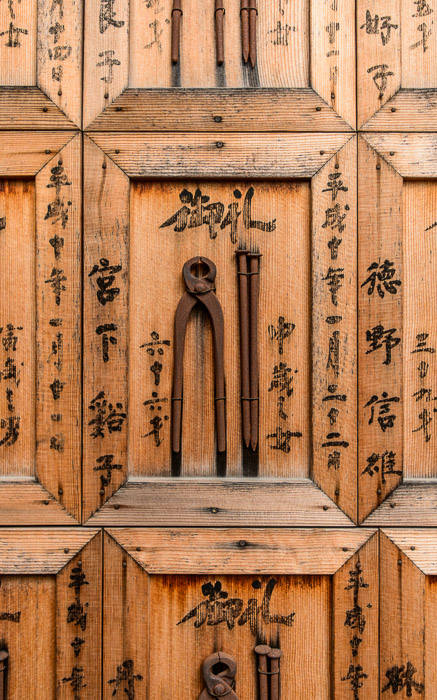
(Wall Detail-nail puller and nails)
Until you understand the meaning behind it, it certainly feels quite odd. But once you understand the meaning (which we'll get to below), you'll understand why the temple is so solemn
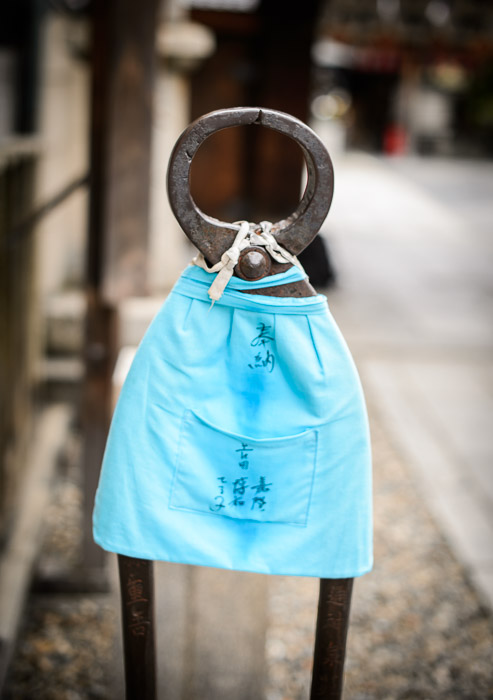 (Huge Puller for Railroad Spikes-or the like; it's about four feet tall)
(Huge Puller for Railroad Spikes-or the like; it's about four feet tall)
As is common with jizo statues (like these), this spike puller has a little bib.
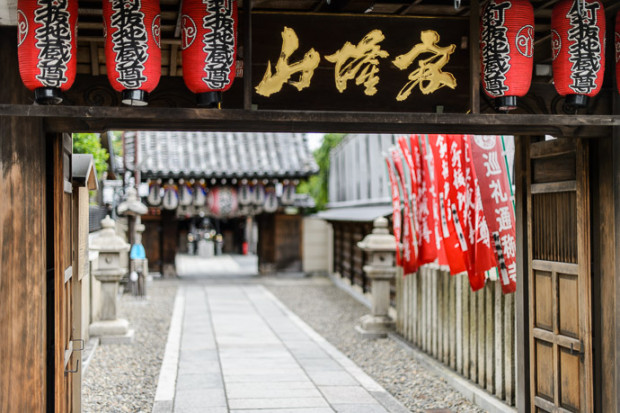
(Entrance from the Street-with its “shrine name” 家隆山)
The temple is in the middle of what is now urban city, with its only exposure to the street being a small unassuming entrance. You could walk by this place every day and never notice it.
The red lanterns across the top have the common name of the temple (釘抜地蔵尊), while the beautifully carved wood with golden lettering has the “mountain name” for the temple, 家隆山 (karyuzan).
This “mountain name” business is a bit interesting, and I didn't understood it until a month or so ago when it was explained to me by the lady of the temple at the Shimyouin Temple (志明院) when I stopped by during a bicycle ride....
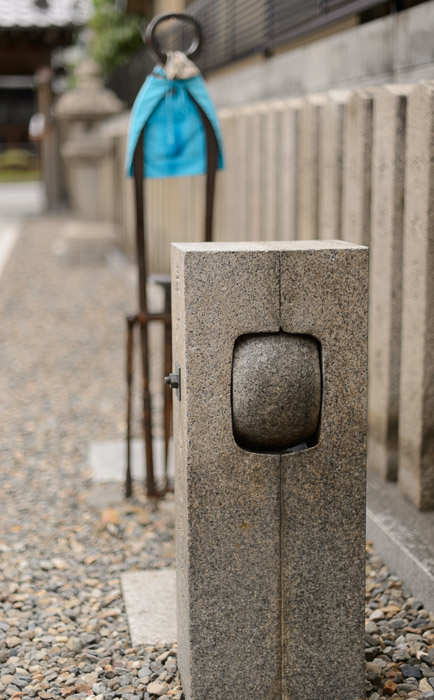
(Stone Wheel)
I don't know the purpose of the stone wheel along the entrance path, but I have a hunch it's related to prayer wheels.
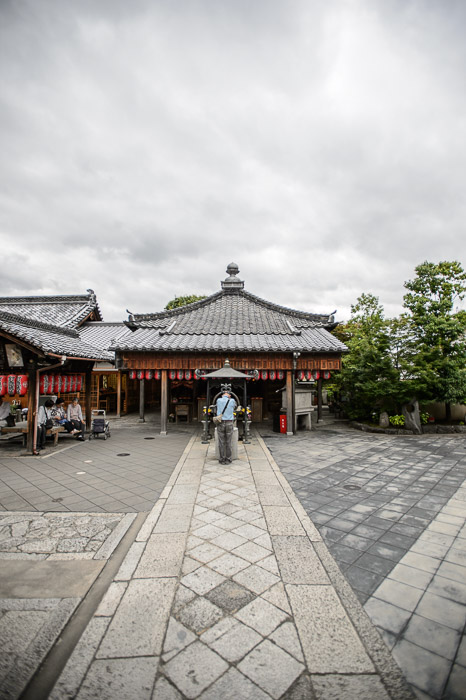
(Inside)
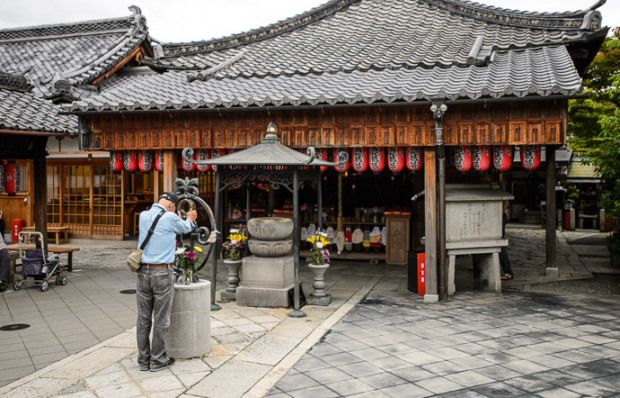
(Deeply Meaningful-long moment in prayer)
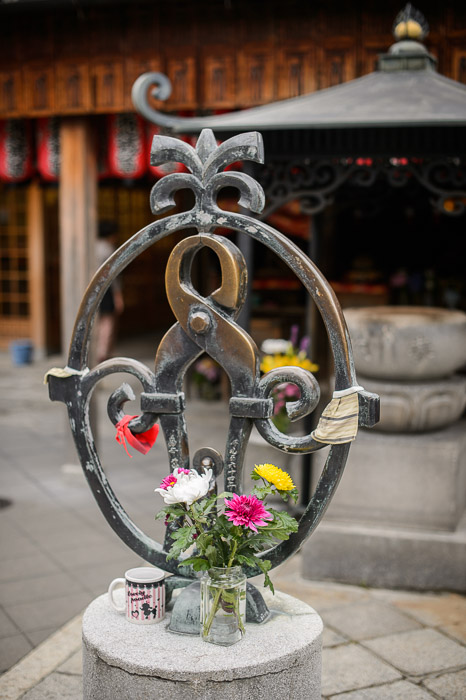
(What He Was Grasping-this donated statue is dated 1964)
So here's the meaning behind the nail/spike pullers...
Some emotional or physical pains are so intense that they feel like a spike through the heart, so you come here to pray that the spike be removed.
It's a simple concept made all the more meaningful by the mood at the temple. It has absolutely no feeling of showy trappings catering to the tourist; it was a 100% low-key local temple for the benefit of those who visit. In my visits, I've never seen a tourist (other than myself and those I brought). It's not that kind of place.
Despite no tourists, the patronage was lively, with visitors seemingly split into two groups: those visiting it simply as their local temple, and those visiting it for its specific spike-pulling specialty.
Because of the delicate nature of that latter group, I took care not to photograph people's faces, and went out of my way to not make people feel they were being watched by the camera.
Someone dealing with death or illness or heartbreak comes here for emotional salve, not to be featured on my blog. If you visit, please take care to be on your most humble, respectful, least-intrusive behavior.
The vibe at this place is so unique and wonderful that I seriously considered whether I should even post about it, worrying that loud touristy visitors could destroy the mood. Folks who read my blog have, by definition, class and good taste , so hopefully it's not a problem.
It's always good to keep in mind when visiting any temple or shine (or church or synagogue or mosque, etc.) that even though it may not be a religious place for you, it is exactly that for some others, so conduct yourself accordingly.

(Even The Incense Basin-has an engraved spike puller)
The temple itself apparently dates from about 1,200 years ago, but according to the story given on its Wikipedia page, the nail-pulling aspect is only four or five hundred years old. The story given there is that there was a merchant with intense pain in his hands that nothing could cure. He prayed intently here for a week, after which he was visited in a dream by the guardian deity and told that his pain came from someone in a past life with a grudge, placing a curse on him by driving huge spikes into a voodoo doll representing the merchant. As evidence, the deity showed the merchant the spikes. When he awoke from the dream, his pain was gone (the spikes having been removed and all).


(Photogenic Lanterns-in front of the main altar)
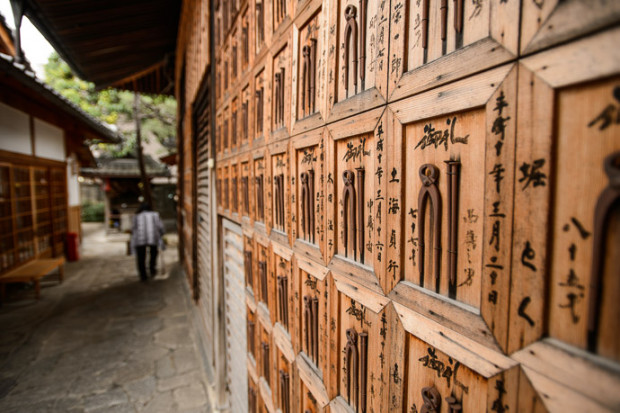
(Wall of Offerings)
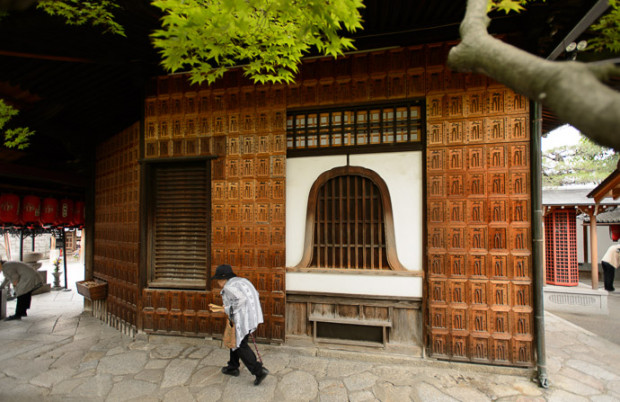
(Making the Rounds)
The main devotional action at the temple involves walking around the small central building. First you collect a number of bamboo sticks equal to your age...
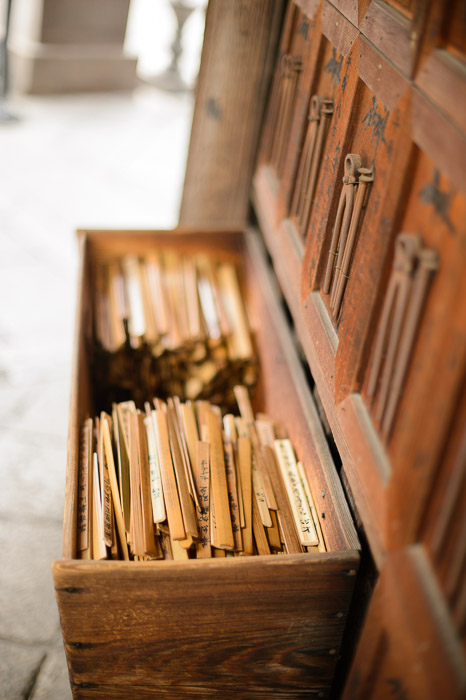
(Box of Bamboo Sticks-each with the name and age of someone who donated it as an offering)
So, if you're 77 years old, you collect 77 sticks.
You then walk around the building, and when you get to the back wall, you touch a special something (I don't know what it is)...
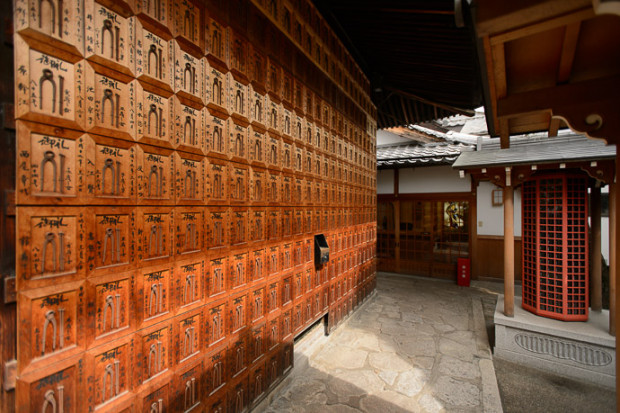
(Back Wall)

(Back-Wall Detail)

In the photo above, you can see the vertical bar has had the paint long worn away. That's where folks touch on the way by. In practice, I saw some folks just stroll by without touching, while others stopped and clasped their hands together in prayer.
As you continue your way around the building, you drop on stick back into the box as you go by, and start over again with another trip around the building, continuing in this manner until the sticks are gone. So, in total, you make as many circuits as your age.
The temple grounds are quite small, but feel big with as much detail as they have packed into them. There are numerous little side areas for devotion...
(“Traditional” Stone Jizo)

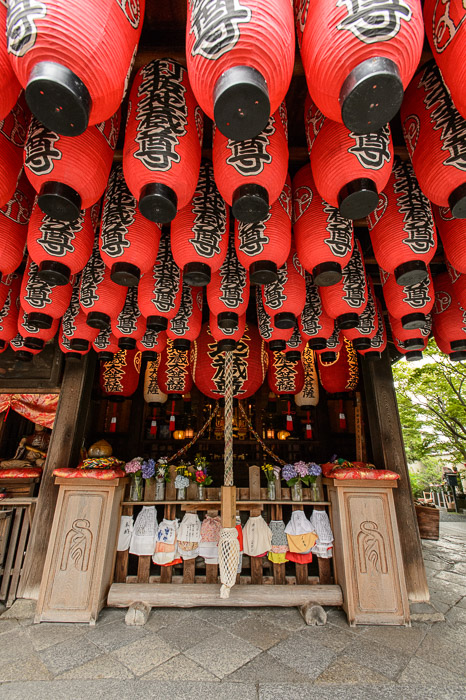
(Main Altar)
.jpg)
(Cute Corner Cozies on the head-high pointy end of a tin roof)
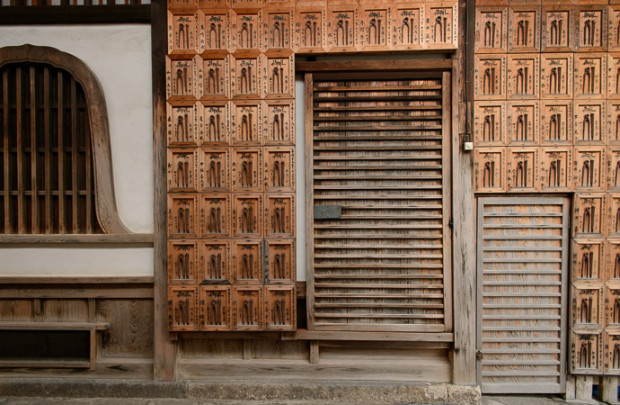
(Patchwork Wall)

Working Well-this deep well was just a source of water for cleaning, watering plants, etc.
Ref: The Solemn Uniqueness of Kyoto’s Kuginuki Jizo Temple (regex)
